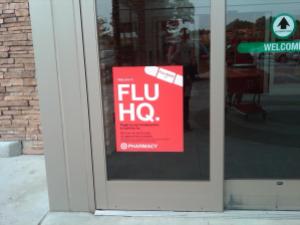Today, a guest post by Bonnie Keith Green, a construction lawyer and litigator with Shumaker, Loop & Kendrick, LLP, in Charlotte, North Carolina. Bonnie represents general contractors, subcontractors, materialmen, suppliers, and sureties in construction disputes.
Through her involvement with the National Association of Women in Construction and the ACE Mentor Program, Bonnie developed a particular interest in representing minority and women-owned construction companies. She currently chairs a joint committee of the North Carolina Bar Association’s Construction Law Section and the United Minority Contractors of North Carolina.
Bonnie and the firm of Shumaker, Loop & Kendrick, LLP, represented Superior Construction Corporation from the beginning of the case (discussed below) through the appeal.
 In a recent victory for contractors, a unanimous three-judge panel of the North Carolina Court of Appeals held that a contractor’s signing of a partial, interim lien waiver did not change the contractor’s date of first furnishing and that the contractor’s lien rights continued to relate back to the date of first furnishing, or first work on the project.
In a recent victory for contractors, a unanimous three-judge panel of the North Carolina Court of Appeals held that a contractor’s signing of a partial, interim lien waiver did not change the contractor’s date of first furnishing and that the contractor’s lien rights continued to relate back to the date of first furnishing, or first work on the project.
The decision is Wachovia Bank National Association, LLC and Preserve Holdings, LLC v. Superior Construction Corporation and Western Surety Company.
Superior was the general contractor and contracted with the original owner, Intracoastal Living, LLC, to construct a condominium development known as “The Preserve” in Oak Island, North Carolina. Superior began work on April 22, 2005. Approximately one month later, Intracoastal, the owner, and Wachovia, the construction lender, executed a loan agreement and promissory note and recorded a deed of trust on the property. During construction, Superior submitted regular pay applications, including its first two pay applications, dated May 11, 2005 and June 9, 2005. Consistent with industry practice, these pay applications contained partial lien waivers.
Two years later, after failing to receive all payments due from the owner,Superiorfiled a claim of lien on the property, stating that it first furnished labor and materials to the project on April 22, 2005.
Wachovia eventually foreclosed on the project, also due to non-payment by Intracoastal. In a separate lawsuit, Wachovia brought a declaratory judgment action, asking the court to rule that its deed of trust had priority overSuperior’s lien. The case was transferred to theNorth Carolina Business Court.
Preserve Holdings, which was formed by a prior owner of Intracoastal, placed an upset bid during Wachovia’s foreclosure, and obtained title to the property, along with all of improvements made bySuperior. Preserve Holdings was required to post a cash bond in the amount of approximately $950,000.00, because the status of Superior’s lien was uncertain. After its purchase, Preserve Holdings replaced Wachovia as the plaintiff in the declaratory judgment litigation. Superior’s bonding company, Western Surety, also claimed entitlement to the cash bond because of payments it made to subcontractors on Superior’s behalf.
The issue for the North Carolina Business Court in the declaratory judgment action was whether Superior’s lien related back to its date of first work and had priority over Wachovia’s subsequently-recorded deed of trust, thus entitling Superior to the cash bond; or alternatively, whether Superior had waived its lien rights by signing the partial, interim lien waivers along with its pay applications, placing its lien behind the deed of trust in priority, and thus entitling Preserve Holdings to the cash bond.
The North Carolina Business Court considered the language of the interim lien waivers and held that they unambiguously waived Superior’s right to lien the property for any work “up to and including” the date of signing the waiver. The Business Court held that this language resulted in a change to Superior’s date of first work and placed Superior’s lien after Wachovia’s deed of trust.
The Court of Appeals reversed, ruling that Superior’s date of first work did not change because of the execution of partial, interim lien waivers. Interestingly, the Court of Appeals looked at the exact same language as the Business Court, and also held that the lien waivers were unambiguous. The Court of Appeals, however, held that the lien waivers unambiguously did not change the date of first furnishing.
The Court of Appeals focused on the language “on account of” contained in the lien waivers, holding that the “on account of” language indicated a causal connection between the contractor’s lien waiver and the specific payment being received by the contractor in exchange for its lien rights. This causal connection meant that the lien waiver was only for that particular payment and did not waive Superior’s rights as to future work or retainage.
The Court of Appeals’ holding is more consistent with the construction industry’s long-standing practice of using partial, interim lien waivers—and the parties’ (at least the contractor’s)—intent in this instance. The Court of Appeals’ decision may well be viewed as controlling precedent in any future cases involving similar lien waivers. There is a need for caution, however. Contractors, subcontractors, materialmen, and suppliers are cautioned to have lien waivers reviewed by their lawyers and to add language explicitly stating that the partial waiver of lien rights in exchange for payment does not alter or change the date of first furnishing and does not waive lien rights for future work or retainage.
The ruling comes at a time when the status of legislation to overhaul North Carolina’s lien laws is uncertain. House Bill 489, which was introduced during the 2011 General Assembly, and would have required all parties to use standard, form lien waivers, has been referred to a Study Commission. It may be considered for passage later this year, or possibly during the short session in 2012. While the legislation is on hold at the moment, the Court of Appeals’ decision is favorable for contractors. In these difficult economic times, any victory such as this in favor of the enforcement of contractors’ lien rights is a welcome development.
Bonnie and I welcome your thoughts and opinions on the case in the comments section, below.





